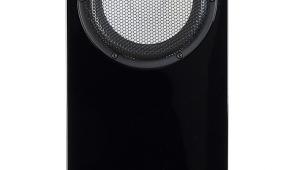Lowther Almira Loudspeaker Page 2
Rawls' and Dianne Reeves' voices retained much of their correct textures, hers clear and his raspy, but the absence of deep bass created an imbalance. It was more like listening to a small two-way speaker, despite ample levels which would destroy such systems. Yes, these go loud, but even with plenty of volume in hand I didn't even bother to try and see how far I could go. It reminded me why horns were the default choice for cinemas back in an era when 5W amplifiers were considered powerhouses.
What caused enough concern to make me question the voicing of the Almira was the Platinum SHM CD of Blind Faith's lone, self-titled album [Polydor Japan UICY-40013]. As trivial as this may seem, it was the simple cymbal crash that punctuates 'Can't Find My Way Home', a specific crunch which sounded papery rather than metallic. That version of Blind Faith is one of the best I've heard, and my trusty Marantz CD12/DA12 in balanced mode is as sweet as CD sound gets. Not this time.
Covering the supertweeter to see if it was responsible merely proved that it added little to the sound. The edginess came from the main driver, making me wonder if the phase plug should be returned to its rightful place, and the LPFRCB removed. One suspects that Chave, Voigt and the rest knew exactly what they were doing a few lifetimes ago.
Helping Hand
Among the amps in my collection is PMC's COR integrated, useful in this instance as it has tone controls that can be defeated from the hot seat via remote. With a listening panel of seasoned audiophiles, we played with the bass and treble, boosting the latter while reducing the former to a point we all agreed sounded flatter than the Almira au naturel.
There are no numerical graduations on the COR's sliders, nor did I have a spectrum analyser to hand, but the reduction in treble was over a third of the way down, while the bass boost was 40% up. A/B-ing between the two, with the soundstage and transient attack unaffected, confirmed that the Almira needs its sound balance tilted toward more bass and less treble.

One of the most revealing albums in my arsenal is the open-reel tape of The Best Of Doc Severinsen [Command/ABC L952]. Severinsen was the band leader for Johnny Carson, the TV host whose Tonight Show ruled US television from 1962 to 1992. Severinsen handled the baton from 1967, and this collection dates from 1970 – late-ish for a tape and mine is in mint condition – and it positively sings on a fully-serviced Revox A77 Mk IV.
Why this tape? Because Doc plays trumpet, and I knew it would reveal as much as anything I could feed the Lowther Almiras. As with Herb Alpert albums, his arrangements of 'Fever', 'Monday, Monday' and other standards or hits-of-the-day are big band interpretations which use the entire bandwidth of a system.
As expected, the Almiras had no trouble conveying the crisp, sharp staccatos on the livelier tracks, such as 'Trumpets And Crumpets', the undeniable speed of the transients as hot as you'd want them to be. When the music turned slow and moody, however, the lack of deep, massive bass deprived the kettle drums on 'Fever' of their weight and presence. It was frustrating, because I heard so much of the old Lowthers in there, waiting to escape.
Looking Forward
A better performance came with Confederate Railroad's eponymous debut [Atlantic 82335-2], one of my favourite 'modern country' albums (although it's now 30 years old). 'Trashy Women' lilted along, as sardonic as ever, the pedal steel crystal clear. And why this venerable album? Because what I unfashionably call 'redneck bass' is about twang, not bulk, and it did nothing to embarrass Lowther's Almira. But I do look forward to a more balanced sound, so I'm gonna treat this review as a beta test.
Hi-Fi News Verdict
PM summed it up succinctly: the Almira is 'a work in progress'. This is not a criticism but an observation based on accepting that Lowther is still undergoing (re)birth pangs. Many elements of Lowthers of yore remain: stunning soundstage, sensitivity that invites the use of SET amps, a cabinet best described as 'fine furniture'. All that remains is the voicing, to regain that vintage Lowther warmth.

















































